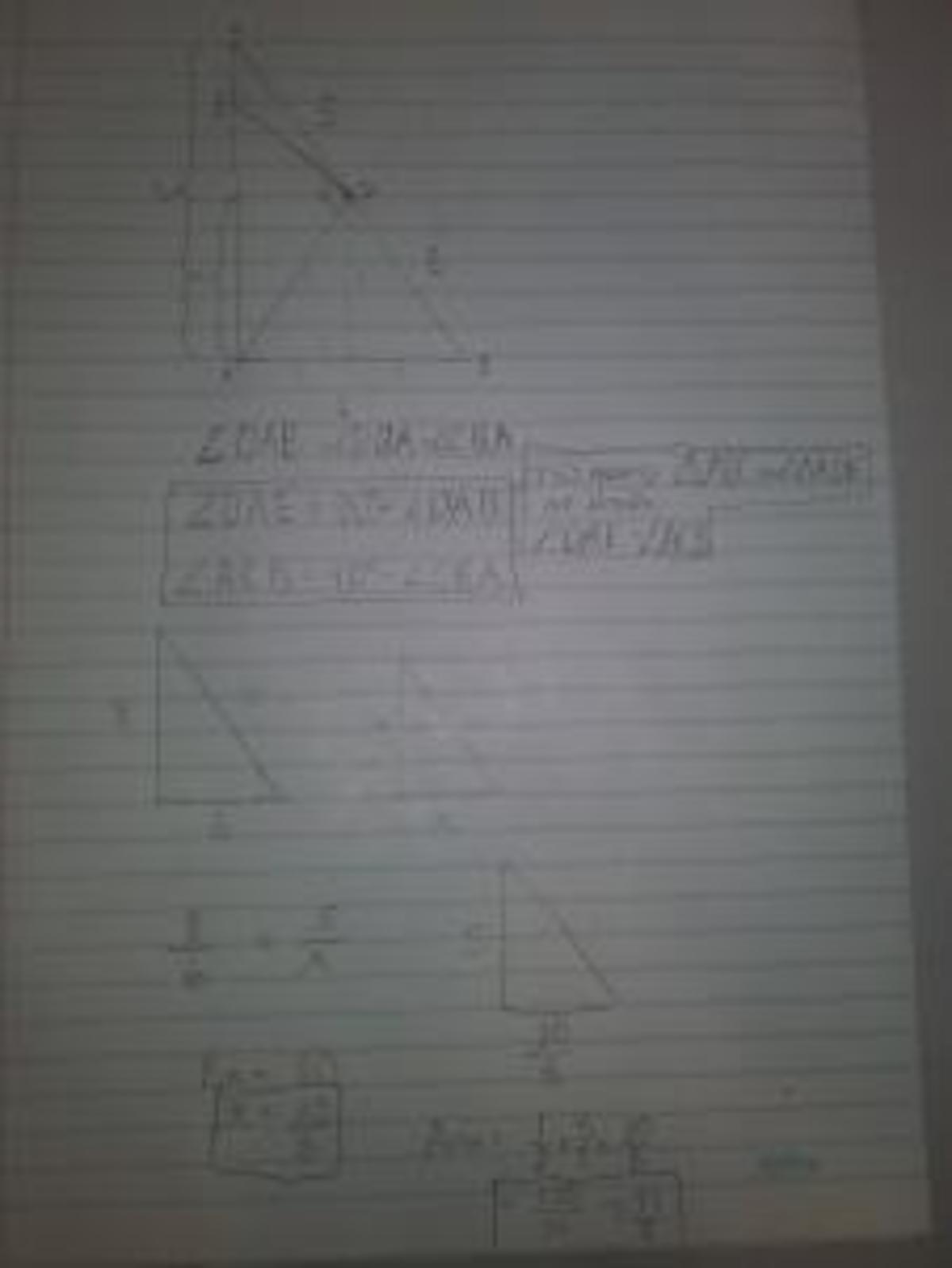Hypotenuse middle point
Triangle A B C has side lengths A B = 6 , B C = 1 0 , C A = 8 .
If D is the midpoint of B C and ∠ A D E = 9 0 ∘ , what is the area of △ A D E ?
This section requires Javascript.
You are seeing this because something didn't load right. We suggest you, (a) try
refreshing the page, (b) enabling javascript if it is disabled on your browser and,
finally, (c)
loading the
non-javascript version of this page
. We're sorry about the hassle.
5 solutions
From △ A B C , ∠ B = cos − 1 5 3 . Then using the law of cosines on △ A B D , A D 2 = B D 2 + A B 2 − 2 ⋅ B D ⋅ A B ⋅ cos B or A D 2 = 5 2 + 6 2 − 2 ⋅ 5 ⋅ 6 ⋅ cos ( cos − 1 5 3 ) , which solves to A D = 5 .
△ A B D is an isosceles triangle, so ∠ B A D = ∠ B = cos − 1 5 3 . Then ∠ D A E = ∠ B A E − ∠ B A D = 9 0 ° − cos − 1 5 3 , and since △ D E A is a right triangle, ∠ D E A = 9 0 ° − ∠ D A E . Combining these gives ∠ D E A = 9 0 ° − ( 9 0 ° − cos − 1 5 3 ) = cos − 1 5 3 .
Since ∠ B = ∠ D E A = cos − 1 5 3 and ∠ B A C = ∠ A D E = 9 0 ° , △ D E A △ A B C by AA similarity, and A D D E = A C A B or 5 D E = 8 6 , which means D E = 4 1 5 .
The area of △ A D E is 2 1 ⋅ A D ⋅ D E = 2 1 ⋅ 5 ⋅ 4 1 5 = 8 7 5 .
The green triangle is in the same proportions as the 6 , 8 , 1 0 triangle, but scaled down by a factor of 8 5 , where 5 is half of the hypotenuse, and 8 is the height of the original triangle. Hence, the area of the green triangle is
( 8 5 ) 2 ⋅ 2 1 ⋅ 6 ⋅ 8 = 8 7 5
I have written my solution down on paper

Let the X and Y axis be along AB and AC respectively........then its simple coordinate geometry.......!!
Segment A D will have length 5 , half the hypotenuse of △ A B C . (The easiest way to see this is to consider the circumcircle of △ A B C ; B C must be a diameter as it subtends a right angle, thus A D is a radius.)
So △ A D B is isosceles. If we drop a perpendicular segment from D meeting A B at F , then F bisects A B , so A F = 3 , and △ A D F is 3 - 4 - 5 . Also, △ A D F ∼ △ E A D , as ∠ F A D and ∠ D A E are complementary. Then
D E A F = A D D F ⟹ D E 3 = 5 4 ⟹ D E = 4 1 5
so the area of △ A D E is 2 1 ⋅ 5 ⋅ 4 1 5 = 8 7 5